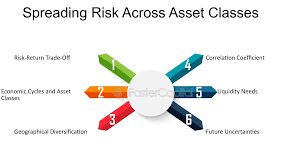
Principles of Investing blog 4 – Investment Horizon and Goals
Introduction
When embarking on the journey of investment, understanding the significance of aligning your financial strategies with your personal goals and the appropriate investment horizon is paramount. This alignment is not just a matter of preference; it is essential for crafting a realistic and effective investment plan that truly reflects your financial aspirations and life circumstances.
What is an Investment Horizon?
Simply put, an investment horizon is the total length of time an investor expects to hold a portfolio or security before liquidating it. This timeframe is crucial as it directly influences the types of investments that are suitable for achieving your goals. The horizon can vary significantly among investors—some may have short-term goals, like saving for a holiday or a major purchase within a few years, while others look towards long-term objectives such as retirement, which could be several decades away.
Understanding your investment horizon is the first step towards ensuring that your investment choices are optimally aligned with your financial goals. It affects how you balance risk and return, how you manage your assets, and ultimately, how well you can withstand the ups and downs of market volatility.
Why Align Investments with Goals?
Aligning your investments with your financial goals and the corresponding horizons ensures that the risks you take are appropriate and that your financial needs are met at each stage of your life. Without this alignment, you might find yourself exposed to unnecessary risks or, conversely, potentially miss out on higher returns that could be achieved through more suitable investment choices.
In this blog, we will delve deeper into the principles of setting and achieving varied financial goals through careful consideration of investment horizons. Whether you are planning for a secure retirement, funding an education, or preparing for any significant future expenditure, understanding how to match your investment strategies with your objectives is crucial for financial success. We’ll explore strategies for different time frames, discuss the importance of regular portfolio reviews, and consider how changes in your life circumstances necessitate adjustments in your financial plans.
Stay with us as we unravel how to effectively synchronise your financial goals with appropriate investment horizons, ensuring that every investment decision you make is a step towards financial security and success.
Understanding Investment Horizons
Defining Investment Horizons
An investment horizon is fundamentally the timeframe during which you plan to keep your investments before liquidating them. This horizon can greatly influence the types of investment decisions you make. For example, a short-term investor may focus on liquidity and capital preservation, while a long-term investor might prioritise capital growth and compounding returns.
The Importance of Clear Horizons
Establishing a clear investment horizon is crucial because it guides your risk tolerance and investment strategy. For instance, if you’re saving for a retirement that’s 30 years away, you can afford to endure higher volatility in exchange for potentially higher returns. In contrast, if you’re saving for a down payment on a house you plan to buy in three years, you’ll likely prioritise stability and quick access to your funds.
Types of Investment Horizons
- Short-term Horizons: Typically less than three years. Investments might include money market funds, short-term bonds, or high-interest savings accounts.
- Medium-term Horizons: Three to ten years. Suitable investments could be a mix of bonds and stocks, with a gradual shift towards less risk as the goal approaches.
- Long-term Horizons: Over ten years. Investors can consider stocks, real estate, or diversified funds that offer the potential for higher returns over time, accepting short-term fluctuations for long-term gains.
Understanding these horizons helps you align your financial goals with the most appropriate investment vehicles, reducing the risk of unexpected financial strain due to market fluctuations or personal need.
Adapting to Life Changes
Your investment horizon isn’t set in stone. Life events such as marriage, the birth of a child, or unexpected financial needs can alter your financial landscape, requiring adjustments to your investment timeline. Regular reviews of your investment horizon, ideally as part of an annual financial review, ensure that your investment strategies remain aligned with your current life situation and future goals.
In the next section, we’ll explore how to set achievable and meaningful financial goals that align with your determined investment horizons, further enhancing your ability to meet future financial needs effectively.
Setting Financial Goals
The Art of Goal-Setting
Effective financial planning begins with clear, well-defined goals. These are not just aspirations but are actionable targets that guide your investment decisions and financial strategies. Setting financial goals involves understanding what you want to achieve financially and determining the timeline necessary to reach these objectives.
Steps to Effective Goal-Setting
- Identify Your Goals: Start by listing what you wish to achieve financially. This could range from buying a home, funding education, planning for retirement, or building an emergency fund. Be specific about what each goal entails and why it’s important to you.
- Categorise Your Goals: Classify these goals based on their time horizon—short, medium, or long-term. This classification helps in selecting suitable investment strategies for each category.
- Assess Financial Resources: Evaluate your current financial resources, including income, savings, and investments. Understanding your starting point is crucial for planning how to reach your goals.
- Estimate Costs: Research and estimate the future costs associated with each goal. This might include the expected cost of a house in a desired area, tuition fees for higher education, or the amount needed for a comfortable retirement.
- Set Priorities: Some goals will be more urgent or important than others. Prioritise your goals to ensure that critical objectives are addressed first, while balancing less pressing ones in your overall plan.
Importance of Flexibility
Life is unpredictable, and your financial goals may change over time due to personal or economic circumstances. Regularly revisiting and adjusting your goals is essential to stay aligned with your current needs and future aspirations. This flexibility ensures that your financial planning remains relevant and focused, even as new goals emerge or existing ones evolve.
Balancing Multiple Goals
Most individuals have multiple financial goals, which may compete for limited resources. Effective financial planning involves balancing these competing interests through strategic asset allocation and regular financial reviews. This balance ensures that you are making progress across all goals without jeopardising any single objective.
In the next section, we will delve into how aligning these goals with your investment horizons can enhance your ability to achieve them, providing a roadmap for financial success tailored to your unique life journey.
Aligning Goals with Investment Horizons
Strategic Alignment for Success
Aligning your financial goals with your investment horizons is a critical step in ensuring that your investment strategy is tailored to meet your objectives effectively. This alignment helps manage risk appropriately and positions you to achieve your financial targets within the desired timelines.
Matching Goals with Suitable Investments
- Short-term Goals: For goals within a three-year period, focus on investments that prioritise capital preservation and liquidity. Suitable options may include short-term bonds, fixed deposits, or high-yield savings accounts. These choices help avoid significant market fluctuations and ensure funds are readily available when needed.
- Medium-term Goals: For goals set between three to ten years, a balanced approach is appropriate. Here, you might consider a mix of equities and bonds to achieve growth while managing risks. Such a portfolio allows for some growth through equities while bonds provide stability against market volatility.
- Long-term Goals: For goals extending beyond ten years, such as retirement planning, investing predominantly in equities or other growth-oriented assets like real estate or mutual funds can be more beneficial. The longer timeframe allows you to ride out market fluctuations and benefit from the potential higher returns of these assets.
Risk Tolerance and Time Horizon
Your risk tolerance is inherently linked to your investment horizon. Generally, the longer the investment horizon, the higher the risk one can theoretically afford to take, given the extended period available to recover from any potential losses. This does not mean high risk is advisable for all long-term investments, but it allows for a broader range of investment opportunities that could potentially offer higher returns.
Dynamic Asset Allocation
As your financial goals and timelines evolve, so should your asset allocation. This dynamic approach ensures that your investments continue to reflect your current financial situation, risk tolerance, and time horizon. Regular reviews and adjustments to your investment portfolio are vital, especially after major life events or significant changes in the market or personal circumstances.

Portfolio Diversification Across Horizons
Maintaining a diversified portfolio across different asset classes and investment horizons can further enhance the alignment between your goals and investment strategies. Diversification not only helps in risk management but also ensures that you are not overly exposed to any single investment type or market movement.
In the upcoming section, we’ll explore practical strategies for different investment horizons, providing insights on how to structure your portfolio to meet both short-term needs and long-term ambitions effectively.
Strategies for Different Investment Horizons
Tailoring Strategies to Time Frames
Effective investment planning requires strategies that are specifically tailored to the length of your investment horizon. This section explores practical approaches for managing investments across different time frames, ensuring each strategy aligns with the specific goals and risks associated with short, medium, and long-term horizons.
Short-term Investment Strategies (Under 3 Years)
For goals that are imminent, the primary concern is capital preservation and liquidity:
- Money Market Funds: Offer safety and easy access to funds, suitable for emergency reserves or upcoming expenses.
- Certificates of Deposit (CDs) and Short-term Bonds: These fixed-income products provide slightly higher returns than savings accounts while keeping risk low.
- Ultra-short Bond Funds: A good option for slightly longer short-term goals, these funds offer higher liquidity with a modest increase in risk and return.
Medium-term Investment Strategies (3-10 Years)
This horizon allows for greater flexibility in balancing growth and safety:
- Balanced Funds: These funds, which mix bonds and stocks, help achieve a moderate growth rate without excessive risk.
- Index Funds: Provide broad market exposure, which can offer a reasonable growth potential with moderate risk over several years.
- Dividend Stocks: Companies that pay regular dividends can offer a steady income stream and potential capital appreciation.
Long-term Investment Strategies (Over 10 Years)
Long-term goals, like retirement, allow for taking on more risk in pursuit of higher returns:
- Stocks and Equity Funds: Over long periods, equities have historically provided high returns despite their volatility.
- Real Estate Investments: Can offer both capital appreciation and rental income, contributing to wealth accumulation over time.
- Sector or Thematic Funds: Investing in specific sectors or themes that are expected to grow significantly over the coming decades.
Adjusting Strategies Over Time
As you move closer to your financial goals, it’s crucial to adjust your investment strategies. This typically involves shifting from higher-risk investments to more conservative ones to protect the gains you have made as you approach the goal:
- Gradual Transition: Systematically decrease equity exposure and increase holdings in bonds or other less volatile assets as the goal approaches.
- Use of Target-Date Funds: These funds automatically adjust their asset mix based on the target date associated with the investor’s financial goal, such as retirement.
Regular Monitoring and Rebalancing
No matter the time frame, regular monitoring and rebalancing of your portfolio are essential. This ensures that your investments remain in line with your changing risk tolerance, financial goals, and economic circumstances:
- Annual Reviews: Regularly review your portfolio to adjust for any significant changes in the financial markets or your personal life that might affect your investment strategy.
- Rebalancing: Actively realign your portfolio to maintain your desired asset allocation, taking advantage of buy-low and sell-high opportunities to optimise performance.
In the final section, we will delve into the critical role of diversification and rebalancing in maintaining a healthy and goal-aligned investment portfolio over time.
The Role of Diversification and Rebalancing
Harnessing Diversification
Diversification is a cornerstone of prudent investing, often referred to as the only “free lunch” in finance because it allows investors to reduce risk without necessarily compromising potential returns. By spreading investments across various asset classes, sectors, and geographies, you can mitigate the impact of a downturn in any single area on your overall portfolio.
- Asset Class Diversification: Involves investing in different types of assets (e.g., stocks, bonds, real estate) to exploit their unique behaviours and economic cycles.
- Geographical Diversification: Spreading investments across global markets to reduce the risk tied to any single country’s economic fortunes.
- Sector Diversification: Allocating investments among various industry sectors to guard against sector-specific downturns.

Strategic Rebalancing
Rebalancing is the process of realigning the weightings of a portfolio’s assets to maintain the original or desired level of asset allocation and risk. It involves buying or selling assets periodically to keep the portfolio’s risk characteristics within acceptable limits. This strategy is crucial for maintaining a balanced approach aligned with changing market conditions and personal financial goals.
- Periodic Rebalancing: This could be on a regular schedule (e.g., annually, semi-annually) or when the allocations deviate by a certain percentage from the target.
- Threshold-based Rebalancing: Triggered when specific assets increase or decrease significantly in value, impacting the overall risk profile of the portfolio.
Benefits of Regular Reviews and Rebalancing
- Risk Control: Helps in managing and controlling the level of risk across the portfolio, ensuring it remains consistent with your risk tolerance and investment horizon.
- Return Optimisation: By selling high and buying low, rebalancing can potentially increase the overall returns of the portfolio.
- Goal Alignment: Ensures that the investment strategy continues to align with personal financial goals as they evolve over time.
Implementing Diversification and Rebalancing
Implementing these strategies requires continuous monitoring of the investment landscape and one’s personal financial situation. It’s advisable to work with a financial advisor who can provide expertise in determining when and how to rebalance, as well as identifying appropriate diversification strategies based on current market conditions and individual risk profiles.
Conclusion
Investing wisely is not just about choosing the right assets; it’s about managing and maintaining a portfolio through strategic diversification and rebalancing. These practices are essential for protecting your investments from volatility and ensuring they continue to meet your financial goals over the long term. Remember, regular portfolio reviews are vital to this process, allowing for timely adjustments that reflect both the changing markets and your evolving financial needs.
In the next blog, we’ll explore behavioural finance and how understanding your own psychological biases can be as important as any financial strategy in successful investing. Stay tuned for insights that could reshape your investing mindset and potentially enhance your financial outcomes.





